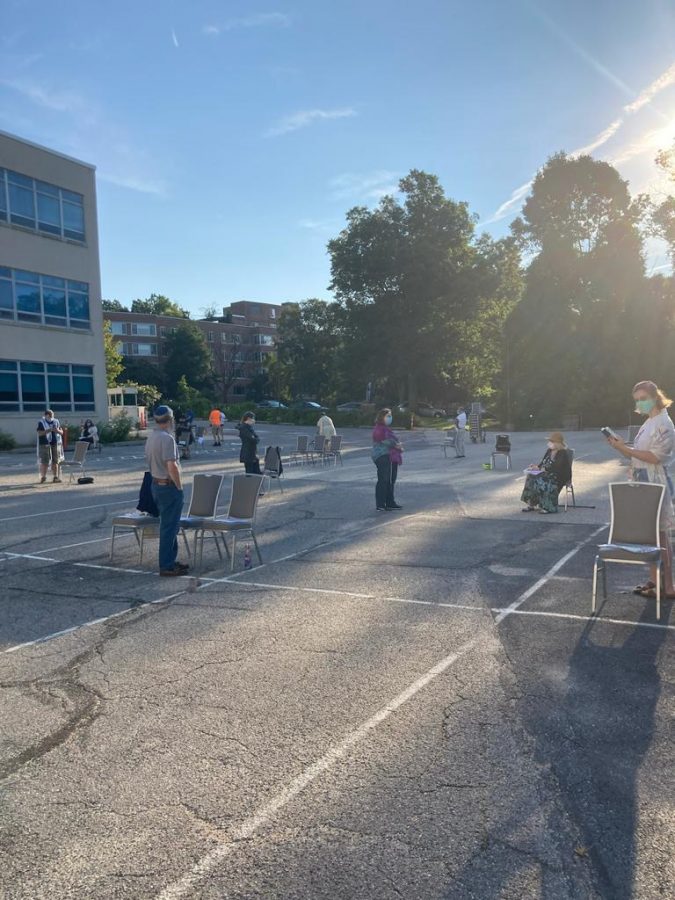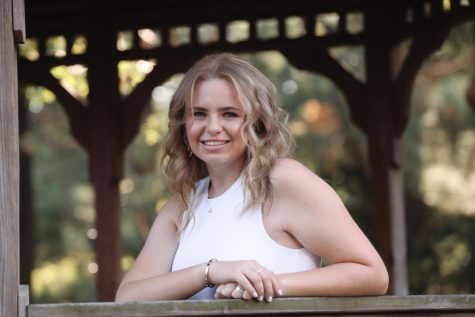Montgomery County revises Covid-19 religious services policy
Participants pray in a socially distanced communal gathering outside.
September 30, 2020
Montgomery County will now allow religious facilities to reopen for indoor services for up to 40% occupancy as of September 22. This restriction follows the previous rule of one participant per 200 square feet.
Synagogues across Montgomery County are responding to these new restrictions in different ways. Congregation Beth El of Montgomery County, which 1,100 family units belong to, will continue to stay closed. They have offered services over Zoom for all services since closing and will continue to do so.
“Decisions are being made in different ways with different priorities,” senior Rabbi of Congregation Beth El Greg Harris said. “We have always said that we are going to be early to close and slow to open because the science of the virus has not changed. So whereas politicians are making decisions based on one set of criteria, we think that what is paramount is protecting and saving lives. So we’re not rushing to come back together in person, which is hard.”
However, Beth El does allow families of those leading services to attend in person. Senior Tali Kuperberg attended second day Rosh Hashanah services because her father was leading.
“I’m not a big praying person, but it was nice,” Kuperburg said. Her family has also hosted socially distant services for high holidays at her house where they view Zoom services together.
Beth Sholom Congregation, however, has been offering outdoor services and some indoor services for months now. Sophomore Aiden Melkin and his family have attended these services every Shabbat.
“It’s definitely different,” Melkin said. “You can’t say as many prayers and it’s definitely a different atmosphere than just being inside. [There’s] somewhat less people, and you don’t have as much of a community feeling as when you’re inside.”
Chabad Lubavitch of Upper Montgomery County is also offering both indoor and outdoor services with a 50-person limit.
“It’s definitely somewhat meaningful for me to go to Synagogue and also see friends there. It was not ordinary. It was kind of weird not going every [Shabbat],” Melkin said.








